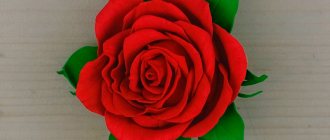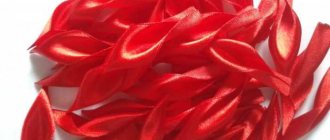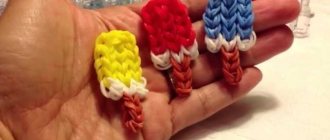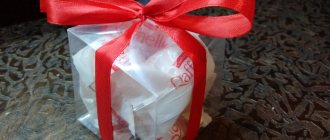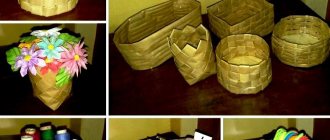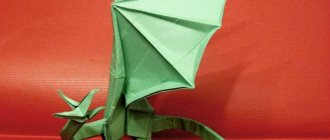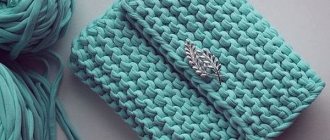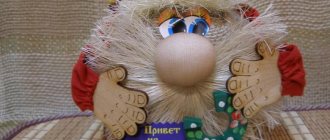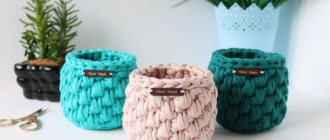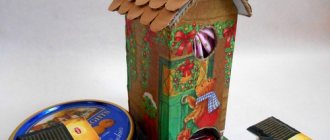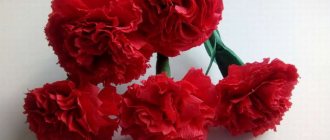The variety of types of needlework is designed to satisfy the most fastidious demands of craftswomen. But if simple knitting and embroidery are not for you, then we suggest mastering a completely new technique - isothread or string art. To create paintings using this technique, no special knowledge is required: everything you need to know to master this type of needlework is given in our article.
What is string art
The art of string art originated in the 16th-17th century in England. At that time, weaving on looms and frames was a very popular activity. One day, one of the craftsmen came up with the idea of putting a lot of nails on a board and pulling the threads so that a certain design came out. Later the technique became more complex, multi-layered and multi-colored. Such original products decorated the walls of houses, art workshops, and public buildings.
This interesting technique, also called “isothread,” gained the greatest popularity thanks to the English mathematical researcher Mary Boole, who figured out how to teach geometry to children using nails and threads. At that time, with her “light hand”, almost all segments of the population began to engage in string art, entire clubs for lovers of this technique began to be created, and training classes were conducted for people of different ages.
Clocks, key holders, mirrors, spaces around lamps, drawers and other elements are decorated using the string art technique.
How to change thread
Most paintings involve changing threads. To perform this procedure, secure one end of the old thread to a nail and trim the end. Tie a new thread to the same carnation. Unique paintings are made from threads of different shades. Your work will look good even if you are doing it for the first time, but only if the shades are chosen correctly. You may not be able to create a brilliant work right away, but experience, as you know, is gained through trial and error. Once you understand which nails to connect with which threads, the process will become easier.
Tools, materials for creativity
To start “embroidery” with isothread, you will need to purchase a piece of plywood or thick cardboard, a couple of small nails, any strong colored threads (floss, iris, knitting, sewing), a hammer, an awl and pliers. The latter will come in handy if the nail is driven in the wrong place. For marking, you will need a pencil to beautifully build complex figures; use a square, compass, various patterns, rulers with circles, diamonds, numbers, etc.
In order to place additional emphasis on one or another part of the image, use paint - acrylic, gouache, or any other. It is also advisable to find or come up with a suitable picture in advance. To easily wind thread onto nails, many craftswomen use a thin hollow tube, a handle without a rod through which the thread is passed. Some handicraft stores sell entire sets of materials and tools for String Art.
Professionals use a cork base instead of plywood - it is softer and has a beautiful texture. Foam plastic is suitable for teaching children string art.
Basic techniques, filling schemes
To master the String Art technique, it is better for a beginner not to immediately take on overly complex products, but to try to make the simplest monochromatic drawings. Beginners will be helped by diagrams where numbers and arrows indicate the sequence and direction of weaving. First, it is advisable to master the principle of filling an angle, circle, arc, since all shapes are derivatives of these elements. Even the most intricate painting depicting flowers, animals, insects, a portrait or a landscape is made up of small and large geometric elements. Volume is obtained by using nails of different lengths, several shades of each color.
This “exercise” is suggested for training purposes. An angle with sides of five and ten cm is drawn on paper, each side is divided into 10 segments, the points are numbered. The lines go back and forth, wrapping around the studs, intersecting in many places. The denser and darker the area being designed should be, the more intersections are made in different directions.
The circle is a little more complicated to fill - first, using a compass, a drawing of the circle is made, the contour is divided into equal parts, about a centimeter long. The threads are pulled at an acute, very acute or right angle to each other. In each case, a different pattern is obtained. The arc is filled in approximately the same way as the corners - both symmetrical and arbitrary winding is allowed.
Portraits woven from threads and nails
The technique of weaving String Art fascinates many people, they begin to do it professionally: they make products for sale, perform huge works with which they participate in competitions and exhibitions. Of course, such skill is very difficult to achieve, but it is this scale, this scope that is especially impressive!
Do you recognize the portraits of idols?!)
Marilyn Monroe
Leonardo DiCaprio
Yury Nikulin
Vladimir Putin
Yuri Gagarin
Using the example of Justin Timberlake's portrait, you can see how such grandiose works are made (video from the wearts ru channel):
The directions of String Art creativity are very diverse; this technique is even used in weaving icons:
Features of creating paintings
First you need to decide what kind of pattern you want to create, think about the dimensions, number of colors, and other parameters. Often ready-made diagrams from magazines are used - these are inscriptions, silhouettes, plot drawings. Pictures with “tips” will be useful for beginners. The most important point in creating a thread pattern is tensioning the threads. It is advisable to do this not too tightly so that the nails do not bend, but not too weakly either. Only strong threads are used - if the material breaks, it is tied, and the resulting knots spoil the appearance of the product.
If you need to get a rich color, a larger number of threads are wound in a certain area. When using several shades of the same color, the threads intersect each other, forming soft gradient transitions.
How deep should you drive the nails?
All nails are driven in to the same depth, at an equal distance from each other. The height of the part protruding above the surface is five to nine mm. When driving in nails, use small forceps or pliers - this way there is less chance of damaging your fingers. After the painting is completed, it is permissible to drive the nails deeper, although this is not at all necessary.
How to change thread color
When winding the thread, its beginning is secured to the first nail with a knot. When it runs out or you need to change the color, a neat knot is also made. The new thread starts again from the knot. After finishing the work, all the “tails” are cut off and glued inside out to make them unnoticeable.
Using the same pattern, using different colors and thread placement options, it’s easy to create completely different paintings.
Options for filling the picture
When the nails are already filled along a certain contour and perimeter of the board, there are two filling options. In the first, the interior is filled, in the second, the background. There is a third option, when the middle is decorated with threads of one color, the edges - with others. The threads do not necessarily intersect in many places. For example, if the outline is square (round) and the middle is in the shape of a heart (circle), the lines run in different directions side by side, like rays from the sun. The use of several overlapping thread colors allows you to create beautiful shades. To create a light, openwork pattern, thin sewing threads are used, wool yarn is used for more voluminous work.
Edging the picture
The edging is a dense, usually contrasting outline of the design. It is performed by entwining carnations with a “snake”. The outlines are often made with a thicker, denser thread, while the filling is made with thinner threads. Sometimes the edging is made just two or three tones darker (lighter) than the figure itself, which looks especially beautiful when creating realistic paintings.
How to create multi-layer compositions
Complex, two-three-color, multi-color compositions can also be created using this technique. If we take an image of an animal or a bird as an example, then first the main color of the creature’s body is woven into the picture, then the contours, paws, spots on the “fur” are made, and lastly the eyes and noses are made. To give the color an interesting shade, threads of similar tones of the same color are used.
Let's start simple
- The easiest type of string art is isothread. Even children and those adults who got a bad grade in drawing at school can cope with this task. All that is needed is to select shades to make the creation harmonious. But monotonous images also look original, so to begin with, you don’t have to be too zealous.
- Experts say that the advantages of the string art technique lie not only in the fact that paintings can decorate any interior, but also in the development of color perception and abstract thinking, the eye. Weaving calms the nervous system, acting no worse than any antidepressant. It teaches children to be persevering, developing their motor skills and increasing self-esteem.
- By the way, despite its simplicity, string art has taken its place in high art. Back in the 70s of the last century, American designer John Eichenger created a whole series of mandalas, which almost the whole world learned about. His works are recognizable because they are distinguished by grace, geometric clarity, and illusions. Thanks to Eichenger, interest in technology flared up with renewed vigor and has not faded to this day.
- Let's try to create a simple picture. Stock up on a wooden or cork base of medium thickness (the selected nails should fit freely into it so that their sharp ends do not show through on the reverse side), paint, nails up to two centimeters long with a small elegant head, strong threads (floss or thin smooth yarn is suitable), hammer, pliers. A pencil, transparent or colored varnish will also come in handy, although you can do without it. If you can't draw a picture by hand, use a stencil. Find a simple image online, print it and trace it.
Selection and preparation of a wooden base
It is permissible to use even rough, unsanded boards as a base, but most often the surface is thoroughly sanded with sandpaper. The most commonly used materials are decorative cork panels, plywood, multi-layer cardboard, and polystyrene foam. If desired, the surface is painted in a light or bright color and carefully covered with paper.
When the canvas is prepared, a drawing is placed on it, holes are pierced with an awl along the contours - nails are later driven into them. It is important to make punctures strictly at right angles - this way the studs will hold tighter. Before you start driving them in, place the board on a slight elevation so as not to accidentally nail it to the table. After applying the markings, the diagram is removed, if pieces of paper remain, they are removed with tweezers, and they begin to fill the picture with threads of a suitable color.
Master classes for beginners and more - sketches, diagrams
The basic patterns for making circles, corners, and arcs using the String Art technique are not at all complicated, but their proper combination makes it possible to create almost any image. But it is important to pull each thread correctly, otherwise the picture will be ruined. Each thread is pulled tightly enough so that it does not sag over time.
The most popular image options:
- flowers, snowflakes;
- hearts, stars;
- leaves, trees;
- letters, words, inscriptions;
- animals, birds, fish;
- still lifes with fruits, bouquets;
- portraits of people;
- world map, starry sky.
When working with nails and a foam base, do not pull the thread too tightly - the parts may fall out and the picture will be ruined.
Snowflake
Snowflakes are the most popular decoration for New Year and Christmas. In the String Art technique it is performed like this:
- an elegant six-pointed snowflake is drawn on a square or round piece of paper;
- the drawing is applied to the plywood;
- nails are driven into the board to create a suitable contour;
- white or pale blue threads are used, sometimes two colors at the same time;
- wrapping is done starting from the middle; The more often the nails are filled, and the thinner the threads, the more interesting the picture will look.
As New Year's decorations, a similar technique involves making snowmen, the most striking detail of the image of which will be an orange carrot nose.
Flower
Flowers are the most popular idea for any art. These include intricate rich shades of roses, lilies, violets, almost “childish” daisies, and sunflowers.
How to make fluffy dandelions step by step:
- for the work you will need about a hundred nails, a skein of white and light green threads, a wide board, a simple pencil;
- Three circles of approximately the same size are drawn on paper - these are flowers;
- then leaves and plant stems are drawn, points where carnations will subsequently be driven in are marked;
- the drawing is applied to the board, the required number of elements is driven in, the paper is removed;
- Dandelion inflorescences are “embroidered” in a circle with white thread; it is also permissible to use an overlapping pattern;
- the stems and leaves are done in green, as is the frame of the board, if required.
Light contours look most advantageous against a dark background, and vice versa.
Maple Leaf
To make a maple leaf from threads and carnations, you need to find a real, preferably large and whole, maple leaf, trace it on paper or directly on the board. To fill the outline, use almost any natural tones - spring green, emerald, brown, yellowish-brown, crimson, orange-yellow, etc. The outlines of the leaves are decorated with a darker braid, but preferably in a tone that matches the main one. The main “veins” are worked out in the same way. If desired, it is easy to create a whole “autumn bouquet” of colorful leaves.
Trees
Trees using the string art technique are made schematic or more believable. Trees, in this case, include both individual branches and an entire thread forest. Such a panel is made in black and white or multicolor. This is an oak or baobab on a greenish-brown background, a green fir tree among snow-covered forests, a sketchy eucalyptus “stuffed” right on the wall. A tree with a thick crown looks interesting, made on a board covered with a dark stain, where the texture of the wood is clearly visible. Here the background is filled with thin threads, and the main element is decorated with paper leaves, apples, cherries, and acorns.
Hearts
The heart is one of the simplest details, after a circle, square, arc. The finished product will be an excellent gift for Valentine's Day; it will decorate a bedroom, living room, or children's room, made in a romantic style. A heart is carefully drawn on paper or the board itself, dots are placed on the resulting line, in increments of about one cm. Nails are driven into the latter, and the line is erased with an eraser. Working with threads begins by tying a knot at the bottom of the heart. The winding is made at an acute angle. There is another option for executing the idea - the background is filled with a thread “web”, the heart itself is painted red and decorated with a textile or paper sticker.
Inscriptions
To create inscriptions you will need stencils of letters in Russian, English, or any other alphabet you like. They are made in capital letters or printed, and the distance between the details is sufficient so that the words are clearly readable and do not merge when viewed from a distance of several meters. This type of decor was invented and first used by the Americans.
Here is one option for creating a word:
- for work you will need a large board, a furniture board;
- All over the surface of the object, at a distance of a centimeter from each other in height and width, nails are stuffed - to make it even, the markings are applied directly to the board, using a ruler or square. If it is decided to make the outer contour round, a compass is additionally used;
- First, the letters are outlined with an outline, then the background is designed in one or more colors;
- filling is done in random order - most often strongly “broken” lines are made, but smooth transitions are also acceptable;
- the letters themselves are covered with a contrasting color scheme or left without filling;
- The finished inscription is decorated with paints, bows, paper roses, etc.
Animals
“Drawing” realistic animals with isothread is very difficult, especially when it comes to multi-color paintings. Before starting, a pencil sketch is made on paper to understand what exactly should happen in the end. Next, the drawing is simplified - the contours of individual large parts are indicated, the template is applied to the surface to be designed, and pierced with an awl in the places where the nails are driven in.
The figure of the animal, bird, fish or the background around it is filled directly. The most interesting picture ideas:
- silhouettes of different birds on a perch;
- colored fish in a round “aquarium”;
- figure of a horse with harness made of strips of leather;
- antlers of deer, elk;
- a wolf howling at the moon - dark in a white circle;
- black and white zebra – whole or only head with mane;
- an elephant in tones of terracotta and reddish-gray, stylized as an African mask;
- brooding monkey;
- roe deer with cub;
- cartoon foxes, raccoons;
- vertical triptych with a giraffe;
- fluffy kittens, puppies, rabbits, made in pastel smoky colors.
Portraits
Unique portraits using string art technique take a long time to create, but look very impressive. Such a product will be an interesting, memorable gift. The basis here is a photo of a famous person, an acquaintance, a beautiful pencil drawing from the Internet. The creation of such a picture begins not from the center, but by filling the entire background - the threads are first stretched in the darkest places (shadows, details of clothing), then the light spots (face, hands) are worked out. The main difficulty here is the use of a large number of colors, halftones, shades, which allows you to create a magnificent portrait or full-length image.
Painting individual background fragments in one color or another will give the picture volume using no more than four or five thread colors.
Letter Design Combined with String Art
Letter design is a long-known interior trend; it was introduced by Western designers. Letters, words, phrases - all these elements are quite appropriate in decor, and in combination with threads and nails they turn into stylish voluminous home decorations.
Absolutely any letters on the wall will enliven the interior! And if they form a word, for example, a meaningful “OK” - that’s even better)
The original master class is in English, so for your convenience we offer a brief translation of the process of creating this painting.
Materials and tools are standard: blue threads, brush, hammer, scissors, nails, dotted sketch on paper, tape.
Print the templates, glue the word from A4 sheets. Place the sketch on the base and drive nails into the points on the drawing. Remove the sketch from the base.
Tie a knot on the first nail and start winding the thread around the perimeter of the pattern (letters “OK”).
Creating letter outlines
Next, wind the threads around the resulting letters, gradually filling the background. You can wind the thread randomly, or you can wind it in a certain specified order. Don't forget to change the color of the threads according to the chosen color scheme!
Filling the background
This composition is made according to the same principle. The marine theme in letter-string design will appeal to everyone who loves the delicate color combination of blue and white)
Such a heartfelt personalized gift will definitely pleasantly surprise)
Author: Belarusian craftsman Alexander Andriyanov
A bright accent in a delicate children's room can be given by a panel with a very important word on it!) An alternative could be a similar panel with the name of the owner of the room or other warm words)
Despite the sharp nails, the String Art style can be very gentle)
Tenderness is in hardness
Love can be expressed by anything
How do you like such a bright greeting in the living room?)
Or a soulful picture in the hallway:
Home Sweet Home
Hallway sign
As they say “Don't worry – be happy!” String Art will help bring positivity into every home!)
How to further decorate the picture
As additional decor in crafts made from threads with nails, paints are used to decorate the substrate, decorative attachments for the heads of nails, beads, rhinestones, and glitter in the form of a spray. The finished painting is placed in a frame made of wood, metal, plastic, cardboard, or other material. Additional parts made of paper, textiles, leather are secured with glue. The heads of the nails are sometimes painted to match the threads, less often - in a sharply contrasting color. Often used are jute “tassels”, satin ribbon bows, paper, dry (varnished) or polymer clay flowers, all kinds of rivets, “gifts of the forest”, such as acorns, pine cones, dry hawthorn, rowan, etc.
